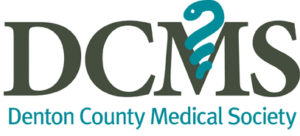The sinuses consist of four paired air-filled cavities in the skull
- Frontal—over the brow in the forehead area

- Ethmoid—just behind the bridge of the nose, between the eyes
- Maxillary—inside each cheekbone
- Sphenoid—behind the ethmoids in the upper region of the nose and behind the eyes
What is Acute Sinusitis?
Acute sinusitis is most often caused by the common cold or allergies. In acute sinusitis the sinuses become inflamed and swollen, which interferes with drainage and causes mucus to build up. Acute sinusitis symptoms often include:
- Nasal congestion causing difficulty breathing through the nose
- Nasal drainage (thick, yellow or greenish discharge) or drainage down the back of the throat
- Pain, tenderness, swelling and pressure around the eyes, cheeks, nose or forehead
- Reduced sense of smell and taste, throbbing facial pain, headache or upper teeth pain
- Fever and cough, which may be worse at night
What is Chronic Sinusitis?
Chronic Sinusitis is an inflammatory process that involves the sinuses and persists for 12 weeks or longer—it can last months or even years. Most cases of chronic sinusitis are due to acute sinusitis that either is untreated or does not respond to treatment. Chronic sinusitis manifests more subtly than acute sinusitis. Chronic sinusitis symptoms may include:
- Symptoms of acute sinusitis but usually without fever and facial pain
- Chronic cough
- Worsening of asthma
- Snoring and coughing at night associated with postnasal drip
What are the risk factors for acute and chronic sinusitis?
- Allergic rhinitis
- Anatomic abnormalities of the nose or sinuses
- Nonallergic rhinitis
- Nasal polyps and immunologic disorders
- Recurrent viral upper respiratory tract infections
- Smoking, environmental irritants and pollutants
- Gastroesophageal reflux disease (GERD)
How do you treat sinus infections?
The goals of treatment for acute and chronic sinusitis are to reduce swelling, promote sinus drainage, and eliminate infections that may be present.
Medications:
- Acute sinusitis is usually treated with an antibiotic for 14 days.
- Chronic sinusitis is usually treated with an antibiotic for several weeks and an oral steroid taper. If nasal polyps are present then oral steroids, a steroid nose spray and anti-leukotriene agents may help. Biologic treatment for nasal polyps may be helpful as well.
- Topical decongestants (Afrin), oral decongestants , nasal saline irrigation, mucolytics and steam inhalation can provide some relief of symptoms of both acute and chronic sinusitis.
Surgery: Surgical procedures are usually reserved for cases of chronic sinusitis that are refractory to medical treatment and for patients with anatomic obstruction.
Our board-certified allergists at North Texas Allergy & Asthma center can help
Underlying environmental allergies can contribute to both acute and chronic sinusitis. Come see our board-certified allergists at North Texas Allergy & Asthma Center for a complete sinus and allergy evaluation. In patients with environmental allergies, immunotherapy can significantly reduce the frequency of sinus infections.
We have a state-of-the-art sinus CT scanner in our office that can help determine whether a patient has a sinus infection, deviated nasal septum, nasal polyps or other structural abnormalities that may be contributing to their symptoms. Our facility is accredited by the Intersocietal Accreditation Commission (IAC) which accredits imaging facilities and hospitals performing CT scans in the United States.
Call us for an appointment!
ROSHNI FOSTER, MD, PhD
Board Certified Allergist







